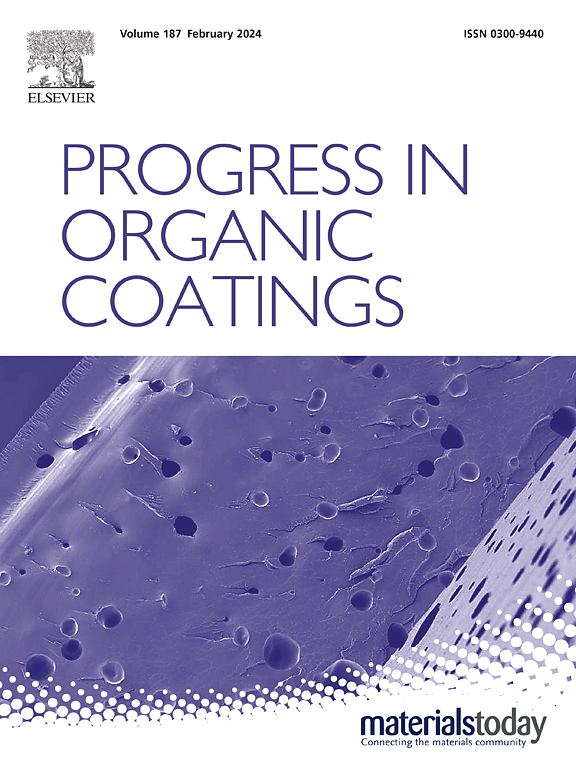Modifying commercial water-based acrylic paint with Rice husk-derived silica aerogel fillers for building thermal insulation
IF 6.5
2区 材料科学
Q1 CHEMISTRY, APPLIED
引用次数: 0
Abstract
For building retrofitting and energy conservation, thermal insulation coatings provide a significant advantage over mineral wool due to their ease of spray application on complex 3D shapes. This study investigates the use of rice husk derived silica aerogel (SA) as a low-cost thermal insulation additive in commercial water-based acrylic paint. The highly porous SA with nanostructured closed pores significantly reduces thermal conductivity by effectively inhibiting heat transfer through the paint coating. The supercritically-dried SA was methyl-silanized to achieve a balance of hydrophobicity and maintain a high silanol density, enabling its compatibility within the water-based emulsion. The SA particles were directly added at 20, 40, and 60 vol% into the emulsion, followed by spray coating onto a bulk substrate resulted in a 1.3 ± 0.2 mm dry film thickness. The relationship between SA volume fraction on the paint properties was investigated through a comprehensive evaluation of aesthetic, mechanical, and thermal characteristics. The introduction of SA did not substantially alter the original paint color, although it increased surface roughness due to SA aggregation. These surface aggregates effectively impede heat transfer and contribute to the formation of a thermally insulating char layer during combustion. Concurrently, the combination of preserved SA porosity and surface hydrophobicity endowed the modified paint with low thermal conductivity (0.11–0.07 W/mK), high cohesive strength (1.3–2.7 MPa), and a high-water contact angle (θ° = 110°).

求助全文
约1分钟内获得全文
求助全文
来源期刊

Progress in Organic Coatings
工程技术-材料科学:膜
CiteScore
11.40
自引率
15.20%
发文量
577
审稿时长
48 days
期刊介绍:
The aim of this international journal is to analyse and publicise the progress and current state of knowledge in the field of organic coatings and related materials. The Editors and the Editorial Board members will solicit both review and research papers from academic and industrial scientists who are actively engaged in research and development or, in the case of review papers, have extensive experience in the subject to be reviewed. Unsolicited manuscripts will be accepted if they meet the journal''s requirements. The journal publishes papers dealing with such subjects as:
• Chemical, physical and technological properties of organic coatings and related materials
• Problems and methods of preparation, manufacture and application of these materials
• Performance, testing and analysis.
 求助内容:
求助内容: 应助结果提醒方式:
应助结果提醒方式:


